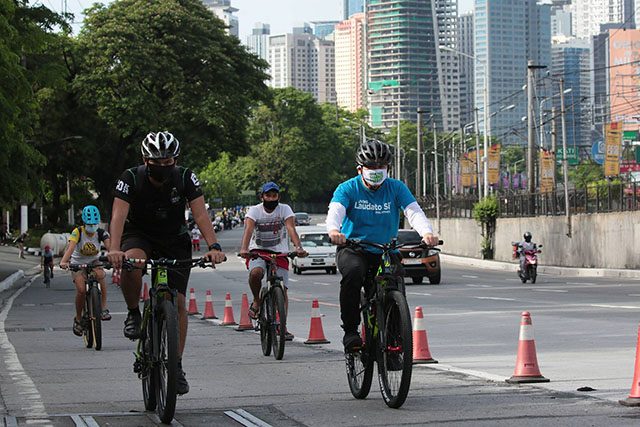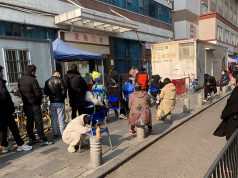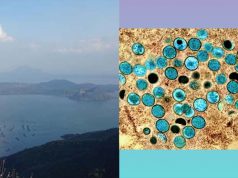
Concerns continued to pour after the government through the Joint Task Force COVID Shield announced that cyclists and joggers are also mandated to wear face shields on top of the requisite face masks outside their homes.
Police Lt. Gen. Cesar Bing reportedly said that cyclists and joggers are not exempted from the new policy that mandates everyone to have face shields in public areas.
“Ang general rule kasi outside residence, dapat mayroon,” he was quoted as saying to a news outlet.
“Mag-stick tayo sa general rule na ‘yun,” Binag added.
“Kasi ang sabi niyan is DOH, kami naman is taga-enforce lang,” he further said.
Malacañang and the Inter-Agency Task Force for the Management of Emerging Infectious Diseases on Wednesday required the use of face shields over face masks whenever people are outside their houses.
Previously, the personal protective equipment was only required to be worn inside enclosed establishments such as malls and in riding public transport.
The face shield should be fully covering the face, from forehead to chin.
Malacañang said the “additional protection” will supposedly prevent the surge of Filipinos getting the coronavirus disease, particularly as the holiday season approaches.
There are no assurances that the policy will be lifted and the penalties for violators will depend on local government units.
Meanwhile, concerns on safety on the road were brought up following Bing’s announcement involving cyclists and joggers, especially since some studies do not find face shields effective in blocking respiratory droplets.
RELATED: Face shields mandated in the Philippines: Do they really protect vs SARS-CoV-2?
“I already wear a mask when cycling and running. Or I run around the neighborhood at night when there aren’t people so I can go without a mask. Do these dimwits know how hard it is with masks on that now, they decided to also mandate face shields for these activities!?” a Twitter user asked in response to Bing’s comments.
“Nasubukan na ba nila mag-bike ng naka-face mask? Kahit nga mag-jog lang eh ang hirap na huminga. Magpa-fog pa ‘yun,” another online user claimed.
“Siz ang hirap na nga mag-bike/jog na may face mask kasi nakakaubos hininga ta’s papa-face shield mo pa,” a Filipino likewise commented.
Cycling Matters, a group dedicated to turning Metro Manila into a bike-friendly place, also raised alarm over the face shield policy and urged the government to “clarify the requirement” and “allow cyclists to ride without the use of such shields.”
The group in a statement said that they “have not found data” supporting that the use of face shields while cycling will effectively curb the transmission of COVID-19.
“Wearing a face shield while riding adversely affects a cyclists’ ability to see, and can obscure and distort a person’s field of vision. This issue is exacerbated at night when conditions are dark or when lights are refracted in the shield and produce glare,” the group added.
“This is also true of riding in the rain and when droplets collect on the shield and make it difficult to see, or when the shield begins to fog as a result of weather conditions. Face shields make it more difficult to breathe, and they can be hard to wear properly with a helmet or eyewear,” they further said.
A study published in the journal Physics of Fluids does not find face shields helpful in blocking respiratory droplets. While the visor can block the initial forward motion of coughs and sneezes, it can still spread out on the sides of the face.
“For the face shield simulation, the shield initially deflected droplets toward the ground after a cough. But small droplets remained suspended at the bottom of the shield and then floated around the sides, eventually spreading about 3 feet (0.9 meters) to the front and sides of the mannequin,” the authors said.
The United States’ Centers for Disease Control and Prevention and the World Health Organization do not require face shields for normal everyday activities and as a substitute for face masks.
“Face shields and goggles are primarily used to protect the eyes of the person wearing it. Goggles do not cover the nose and mouth. Face shields have large gaps below and alongside the face, where your respiratory droplets may escape and reach others around you,” it said on its COVID-19 guidelines.
“At this time, we do not know how much protection a face shield provides to people around you,” US CDC added.









